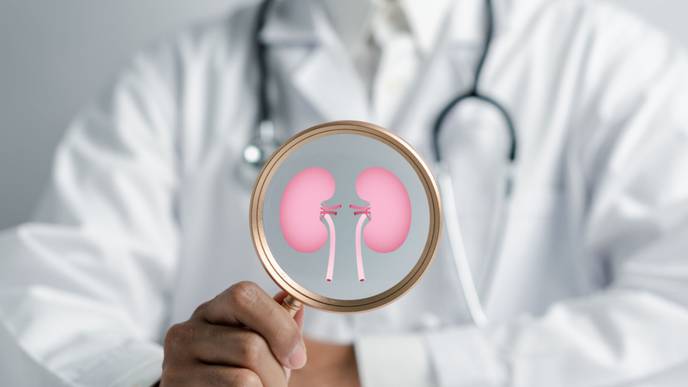ReachMD
Be part of the knowledge.™Minimal Incidence of Severe End-Stage Kidney Disease Following SABR for Localized Primary Kidney Cancer

Stereotactic ablative body radiotherapy (SABR) is increasingly utilized for treating primary renal cell carcinoma (RCC), yet its impact on renal function remains uncertain. This retrospective single-institution analysis aimed to assess the incidence and predictive clinical factors associated with severe to end-stage chronic kidney disease (CKD) following SABR for RCC. From 2012 to 2020, adult patients with localized RCC, no metastatic disease, baseline estimated glomerular filtration rate (eGFR) of ≥ 30 ml/min/1.73 m2, and at least one post-SABR eGFR at six months or later were analyzed. Patients with upper tract urothelial carcinoma were excluded. The primary outcome was freedom from severe to end-stage CKD, determined using the Kaplan–Meier estimator.
Cox proportional hazard models assessed the impact of baseline CKD, age, hypertension, diabetes, tumor size, and fractionation schedule. Seventy-eight consecutive patients (median age: 77.8 years; tumor size: 4.5 cm) with a median follow-up of 42.2 months were included. The baseline median eGFR was 58 ml/min, with 55% of patients having baseline CKD stage 3. By the last follow-up, 2.8% of baseline CKD 1–2, 25.9% CKD 3a, and 68.8% CKD 3b patients had developed CKD stage 4–5. The estimated probability of freedom from CKD stage 4–5 at 1 and 5 years was 89.6% and 65%, respectively. Univariable analysis revealed worse baseline CKD (p < 0.0001) and multi-fraction SABR (p = 0.005) as predictive of stage 4–5 CKD, with only the former remaining significant in the multivariable model.
In conclusion, SABR demonstrated satisfactory nephron sparing and acceptable rates of severe to end-stage CKD in this elderly cohort with pre-existing renal dysfunction, making it a viable option for medically inoperable patients.
Source: ro-journal.biomedcentral.com/articles/10.1186/s13014-024-02413-w
Facebook Comments